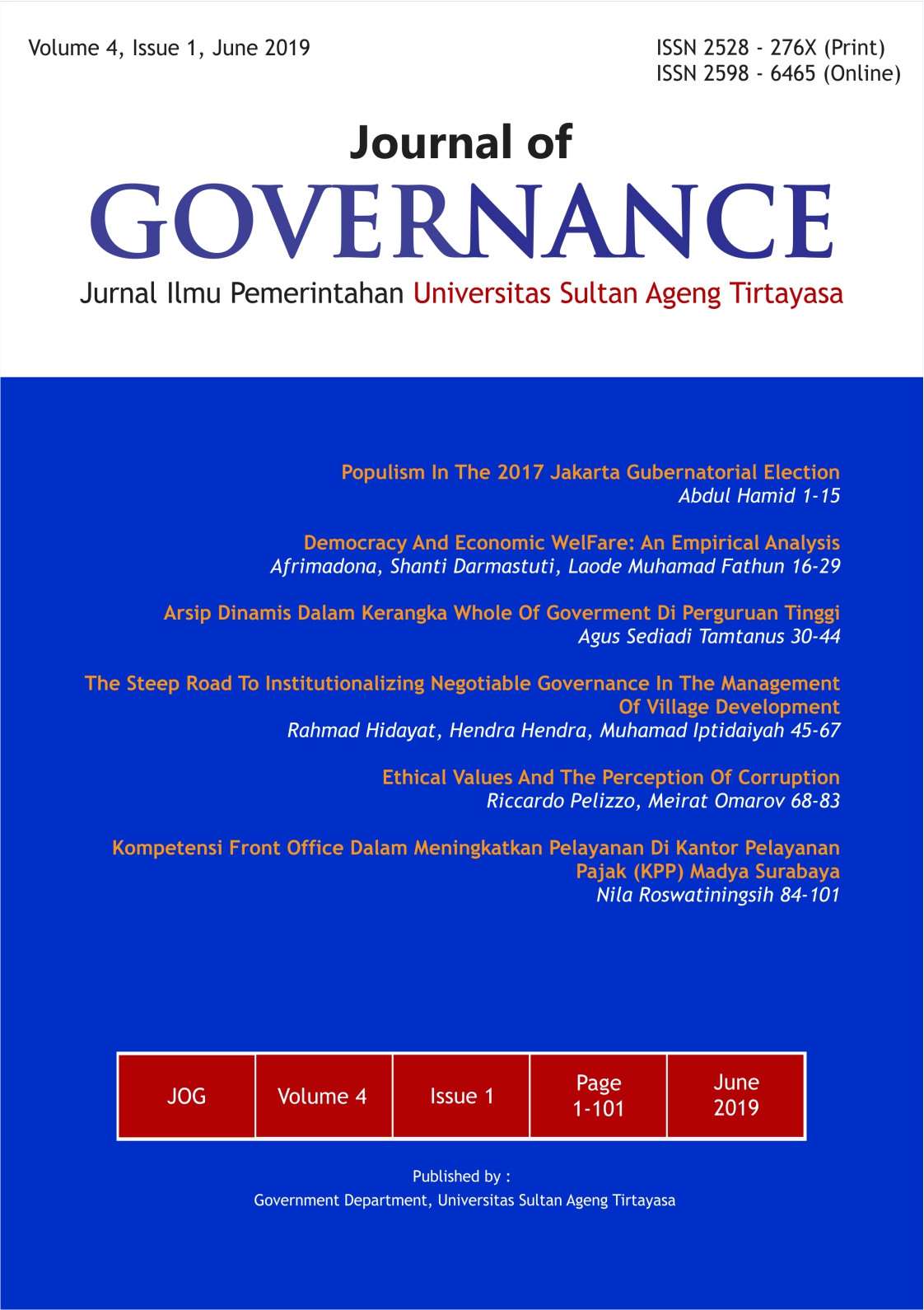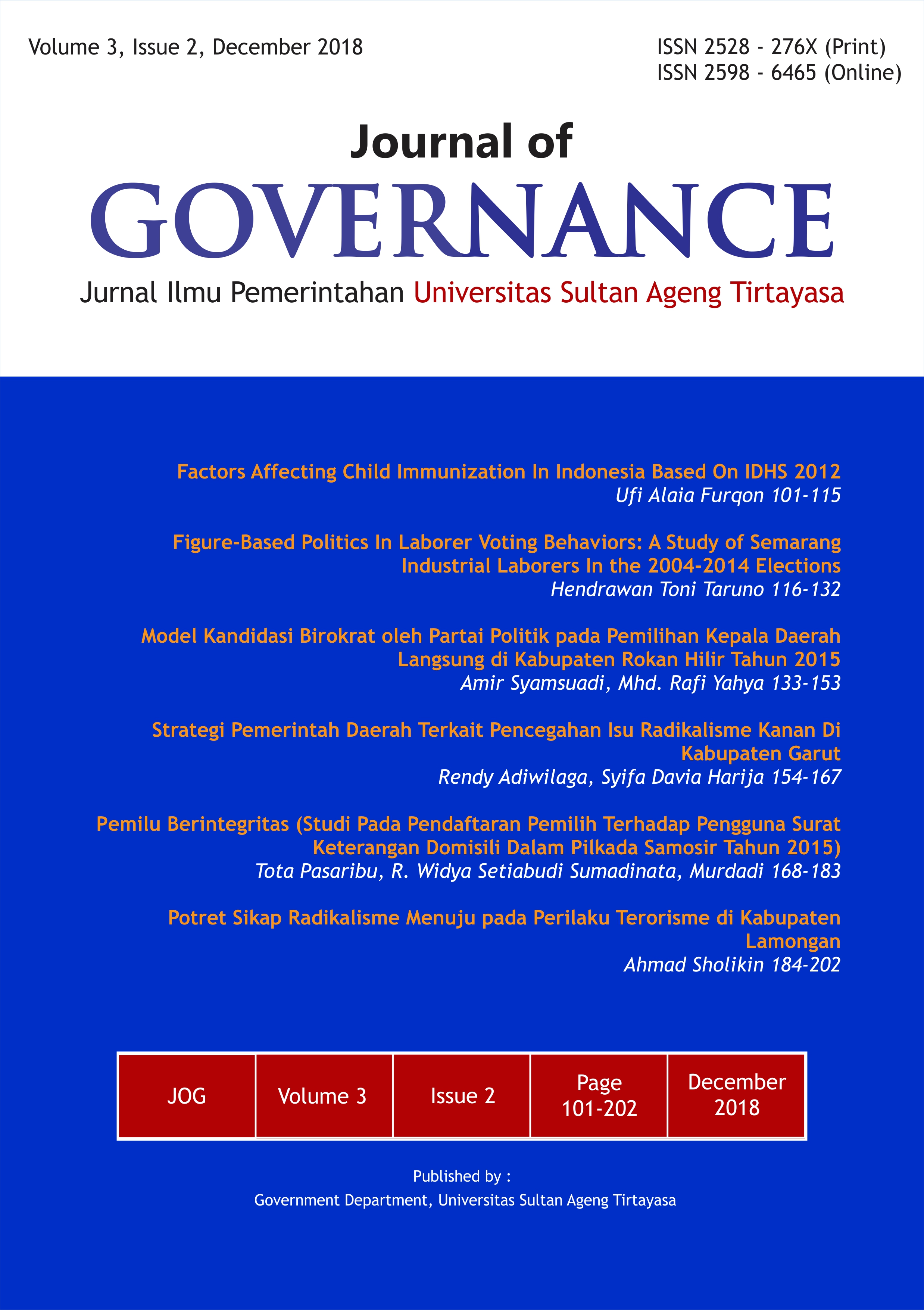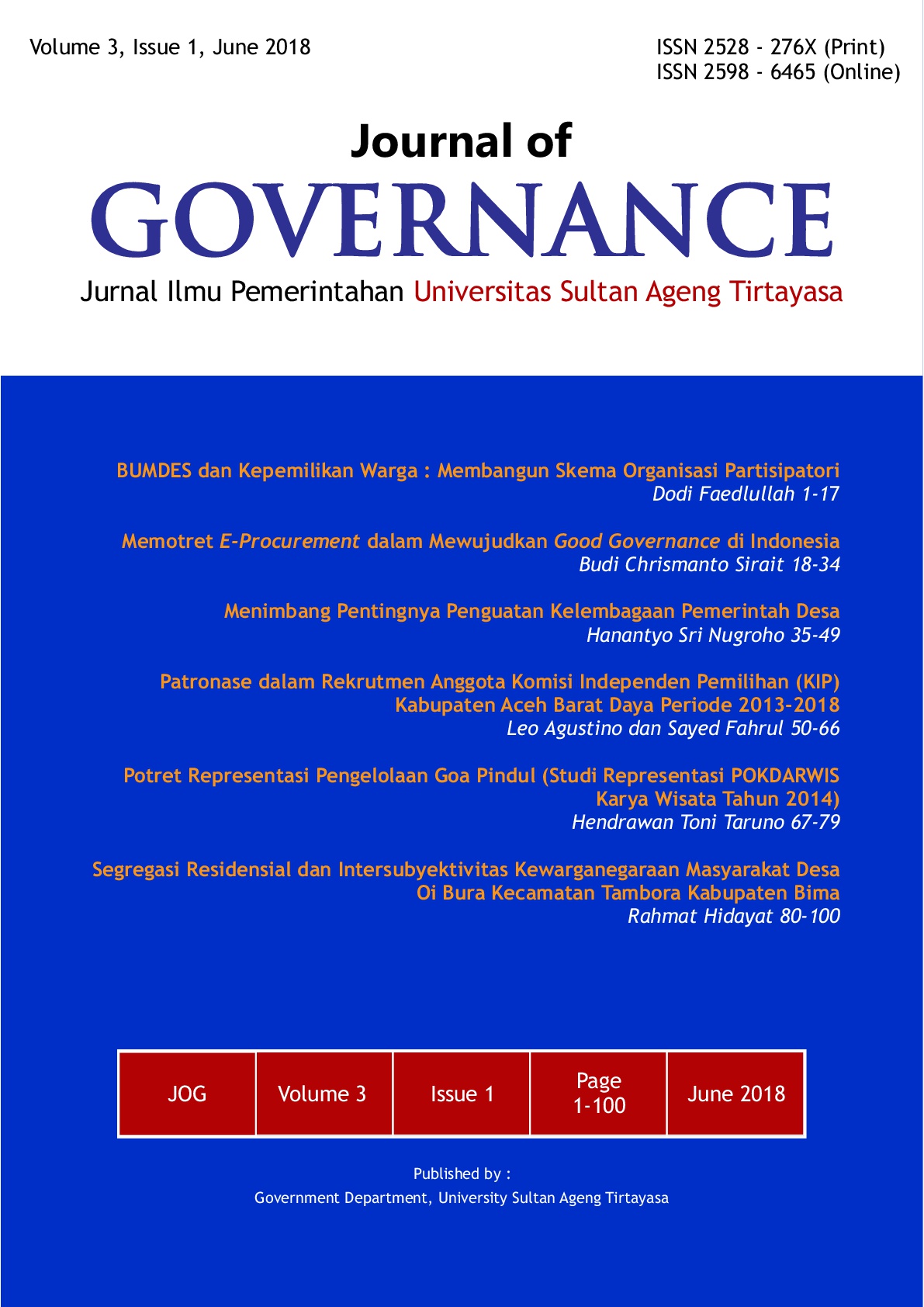Dynamic Governance Model for Mass Rapid Transportation in Jakarta
Abstract
This study aims to investigate the Dynamic Governance Model in Jakarta's Mass Rapid Transportation (MRT) system. The fundamental principle of Dynamic Governance is the integration of culture and capability to foster change that aligns with evolving societal needs in an era marked by uncertainty. Organizations must dynamically and flexibly adapt to effectively navigate the complexities they face. A qualitative approach was employed in this research, utilizing data collection methods such as interviews, observations, and document analysis. The findings reveal that the implementation of the three pillars of Dynamic Governance is consistently preceded by preparatory processes. For example, research is conducted prior to the application of thinking ahead, internal reviews precede thinking again, and benchmarking is undertaken before implementing thinking across. Additionally, the study identifies interconnections among the three pillars, emphasizing their mutual reinforcement. Furthermore, culture is found to play a vital role in fostering work commitment and ensuring operational consistency in the field.
Keywords
Full Text:
PDF 31-44References
Adni, D. F., Zubaidah, E., & Baharuddin, T. (2024). Agile Governance: The Urgency of Handling Forest and Land Fires in Riau Province. Jurnal Manajemen Pelayanan Publik, 8(2), 490–505. https://doi.org/10.24198/jmpp.v8i2.53161
Dirgahayani, P., Yesuari, A. P., Wulansari, T. R., & Sutanto, H. (2020). The formation of network governance in accelerating the implementation of TOD: The case of Jakarta MRT Phase 1, Indonesia. Case Studies on Transport Policy, 8(4), 1412–1425. https://doi.org/10.1016/j.cstp.2020.10.006
Felin, T., & Powell, T. C. (2016). Designing Organizations for Dynamic Capabilities. California Management Review, 58(4), 78–96. https://doi.org/10.1525/cmr.2016.58.4.78
Gudmundsson, H., Hall, R. P., Marsden, G., & Zietsman, J. (2016). Governance and Decision-Making in Transportation (pp. 111–136). https://doi.org/10.1007/978-3-662-46924-8_5
Hube, B., Stockport, G., & Soutar, G. (2022). A cogwheel model of dynamic capabilities: Evidence from an Australian university. Australian Journal of Public Administration, 81(4), 569–588. https://doi.org/10.1111/1467-8500.12554
Indahsari, C. L., & Raharja, S. J. (2020). New Public Management (NPM) as an Effort in Governance. Jurnal Manajemen Pelayanan Publik, 3(2), 73. https://doi.org/10.24198/jmpp.v3i2.25342
Karthik, S., & Loui, T. R. (2021). Development of Traffic Congestion Model to Evaluate the Level of Congestion and its Associative Cost for an Urban Arterial Road: a Case Study. Journal of The Institution of Engineers (India): Series A, 102(2), 623–632. https://doi.org/10.1007/s40030-021-00526-z
Miles, M. B., Huberman, A. M., & Saldaña, J. (2014). Qualitative Data Analysis: A Methods Sourcebook (3rd ed.). SAGE Publications.
Neo, B. S., & Chen, G. (2007). Dynamic Governance: Embedding Culture, Capabilities And Change In Singapore. World Scientific .
Nwokedi, T. C., Okoroji, L. I., Okonko, I., & Ndikom, O. C. (2020). Estimates of Economic Cost of Congestion Travel Time Delay Between Onne-Seaport and Eleme-Junction Traffic Corridor. LOGI – Scientific Journal on Transport and Logistics, 11(2), 33–43. https://doi.org/10.2478/logi-2020-0013
PwC-PPF. (2015). Agility in government: Responding to citizens ’ changing needs.
South, A. J., Levitt, R. E., & Dewulf, G. P. M. R. (2017). Dynamic Stakeholder Networks and the Governance of PPPs. Advances in Public-Private Partnerships, 499–515. https://doi.org/10.1061/9780784480267.039
Spanuth, T., Heidenreich, S., & Wald, A. (2020). Temporary organisations in the creation of dynamic capabilities: effects of temporariness on innovative capacity and strategic flexibility. Industry and Innovation, 27(10), 1186–1208. https://doi.org/10.1080/13662716.2020.1842723
Suryawan, I. W. K., Mulyana, R., Yenis Septiariva, I., Prayogo, W., Suhardono, S., Sari, M. M., & Ulhasanah, N. (2024). Smart urbanism, citizen-centric approaches and integrated environmental services in transit-oriented development in Jakarta, Indonesia. Research in Globalization, 8, 100181. https://doi.org/10.1016/j.resglo.2023.100181
Widita, A., Welch, T., Rukmana, D., & Diwangkari, A. (2023). Impact of the MRT Jakarta on Congestion: Evidence from a Before-After, Treatment-Control Evaluation. Journal of Planning Education and Research. https://doi.org/10.1177/0739456X231174136
Wijaya, S. E., & Imran, M. (2019). Moving the Masses: Bus-Rapid Transit (BRT) Policies in Low Income Asian Cities. Springer Singapore. https://doi.org/10.1007/978-981-13-2938-8
DOI: http://dx.doi.org/10.31506/jog.v10i1.30968
Refbacks
- There are currently no refbacks.
⟨Recent Issues⟩ | ⟨Upcoming Issues⟩ |
Recent Issues
Volume 6, Issue 2: (2021) | Volume 6, Issue 1: (2021) | Volume 5, Issue 2: (2020) | Volume 5, Issue 1: (2020) | Volume 4, Issue 2 (2019) |
 |  |  |  |  |






